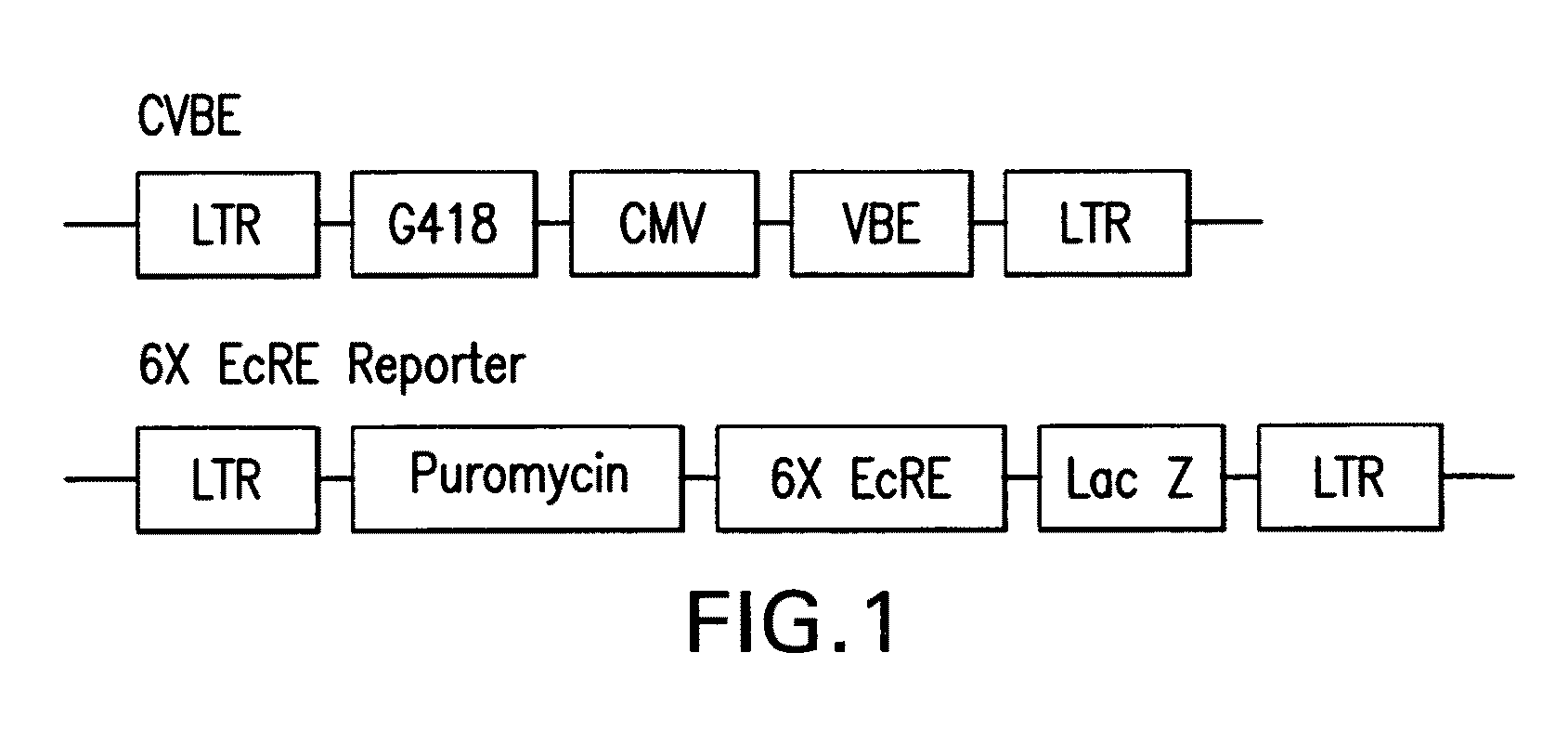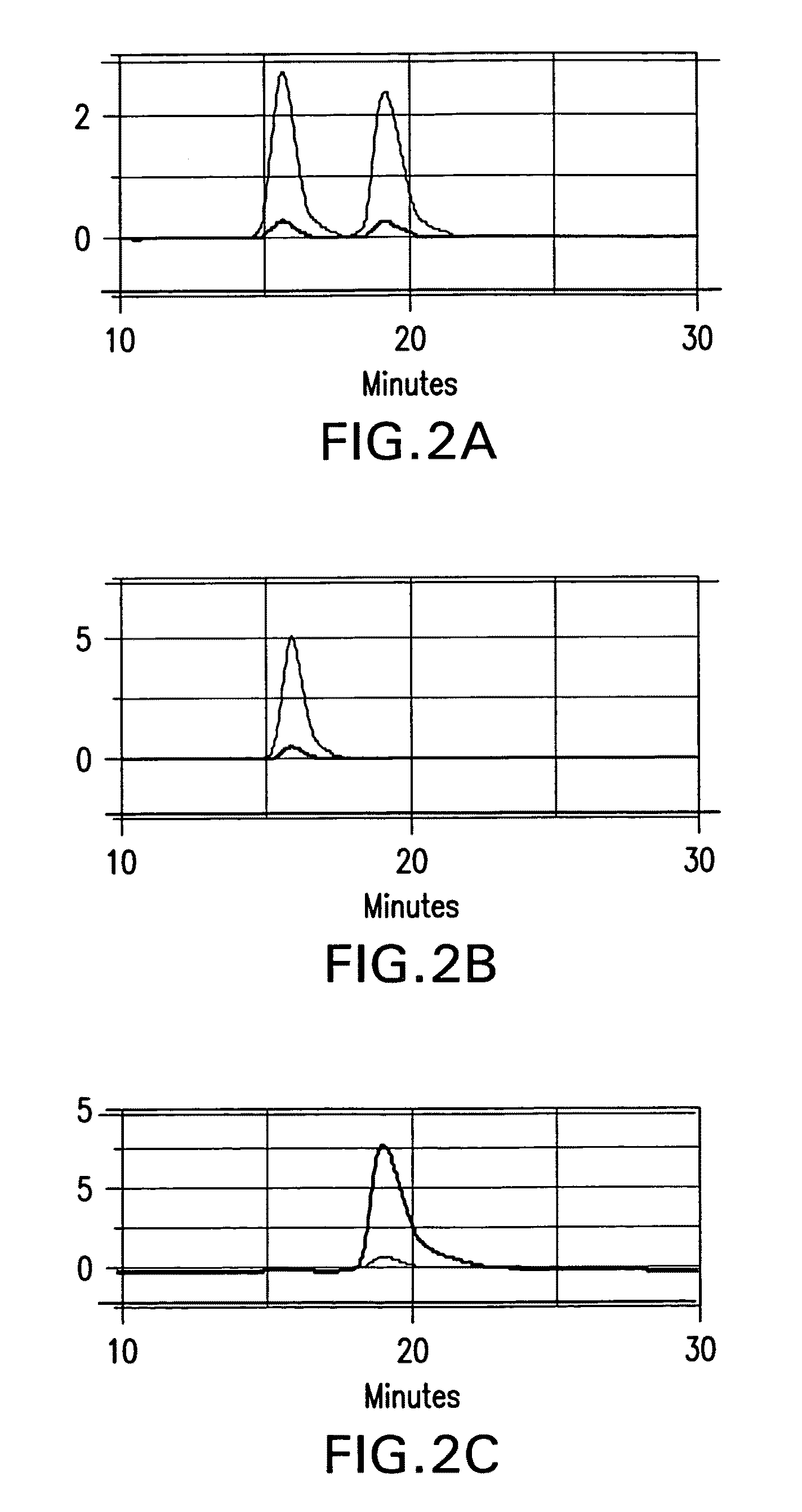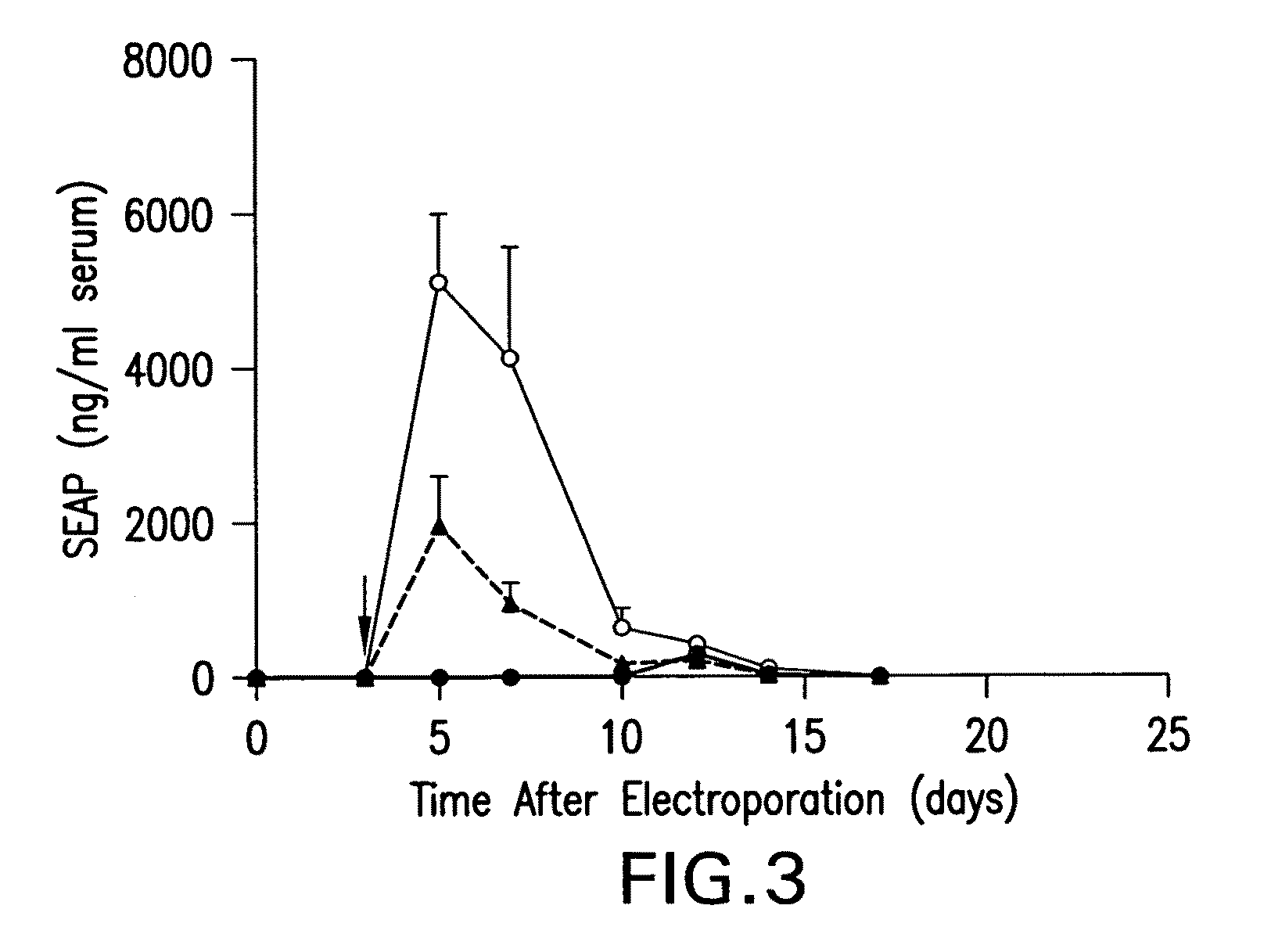Chiral diacylhydrazine ligands for modulating the expression of exogenous genes via an ecdysone receptor complex
a technology of ecdysone receptor and ecdysone, which is applied in the field of biotechnology, genetic engineering and medicinal chemistry, can solve the problems of limited use of pr1-a, system limitations, and leakage, and achieve the effect of temporally controlling polypeptide production
- Summary
- Abstract
- Description
- Claims
- Application Information
AI Technical Summary
Benefits of technology
Problems solved by technology
Method used
Image
Examples
example 1
[0644]
Synthesis
[0645]
[0646]Compound 1: Benzyl carbazate is commercially available.
[0647]Compound 2: Benzyl carbazate (300 g, 1.81 moles) was dissolved in 1.2 L of methyl alcohol in a 3 L 4-neck flask equipped with reflux condenser, thermometer, magnetic stirring, and a 500 mL addition funnel. Glacial acetic acid (5 mL) was added to the mixture that was then brought to 45° C. Pivaldehyde (248.8 g of solution, 2.17 moles, ca. 75% in t-butanol) was added portionwise over 30 minutes. The reaction was heated at reflux for 30 minutes, while monitoring by TLC. The mixture was allowed to cool to nearly room temperature and was concentrated on a rotary evaporator to a total volume of ca. 700 mL. Ca. 7 g activated charcoal was added at ca. 30° C. The mixture was stirred overnight and filtered through a pad of Celite in a pore size “C” glass fritted Büchner funnel. The solvent was removed in vacuo to leave a light yellow oil that was poured into a crystallizing dish and induced to crystallize ...
example 30
[0656]
Synthesis
[0657]
[0658]Compound 1: (R)-3,5-dimethyl-benzoic acid N-(1-tert-butyl-butyl)-hydrazide was prepared as described in Example 1.
[0659]Compound 2: Compound 2 was prepared from the corresponding carboxylic acid. Thionyl chloride (1.24 g, 10.42 mmoles) was added to a solution of (S)-(+)-2-(6-methoxy-naphthalen-2-yl)-propionic acid (Naproxen, 2 g, 8.69 mmoles) in 8.2 mL chloroform in a round bottom flask equipped with magnetic stirring. A drop of DMF was added and the mixture was refluxed for 3 hours. Chloroform and excess thionyl chloride were distilled from the reaction mixture while methylene chloride was added. Evaporation of residual solvent yielded (S)-2-(6-methoxy-naphthalen-2-yl)-propionyl chloride (1.918 g, 88.8% yield). Rf=0.2 (1:1 hexanes:ethyl ether). 1H NMR (400 MHz, CDCl3) δ 9.98 (br, 1H), 7.78 (t, 2H), 7.36 (d, 1H), 7.18 (d, 1H), 7.14 (m, 2H), 4.25 (q, 1H), 3.93 (s, 3H), 1.68 (d, 3H).
[0660]Compound 3 (title compound): (R)-3,5-Dimethyl-benzoic acid N-(1-tert-b...
example 31
[0662]
Synthesis
[0663]
[0664]Compound 1: (E)-N′-(2,2-dimethyl-propylidene)-hydrazinecarboxylic acid benzyl ester was prepared as described in Example 1.
[0665]Compound 2: (R,R)-2-allyl-2-chloro-3,4-dimethyl-5-phenyl-[1,3,2]oxazasilolidine was prepared using methodology described in Example 1 using R,R-pseudephedrine.
[0666]Compound 3: (S)—N′-(1-tert-butyl-but-3-enyl)-hydrazinecarboxylic acid benzyl ester was prepared using methodology described in Example 1. Analytical data: Rf=0.46 (2:1 hexanes:ethyl acetate); mp=69-71° C.; 1H NMR (400 MHz, CDCl3) δ 7.4 (br s, 5H), 6.2 (br s, 1H), 6.0 (br s, 1H), 5.15 (s, 2H), 5.1 (s, 2H), 4.1 (br, 1H), 2.7 (m, 1H), 2.4 (br d, 1H), 2.0 (m, 1H), 0.95 (s, 9H); ee=98.2%, ADH column; [α]25589 +39.30 (c=2.03, CHCl3).
[0667]Compound 4: (S)—N′-(1-tert-butyl-but-3-enyl)-N′-(3,5-dimethyl-benzoyl)-hydrazine carboxylic acid benzyl ester was prepared using methodology described in Example 1. Analytical data: Rf=0.43 (2:1 hexane:ethyl acetate); mp=150-151.5° C.; 1H ...
PUM
| Property | Measurement | Unit |
|---|---|---|
| enantiomeric excess | aaaaa | aaaaa |
| melting point | aaaaa | aaaaa |
| melting point | aaaaa | aaaaa |
Abstract
Description
Claims
Application Information
 Login to View More
Login to View More - R&D
- Intellectual Property
- Life Sciences
- Materials
- Tech Scout
- Unparalleled Data Quality
- Higher Quality Content
- 60% Fewer Hallucinations
Browse by: Latest US Patents, China's latest patents, Technical Efficacy Thesaurus, Application Domain, Technology Topic, Popular Technical Reports.
© 2025 PatSnap. All rights reserved.Legal|Privacy policy|Modern Slavery Act Transparency Statement|Sitemap|About US| Contact US: help@patsnap.com



